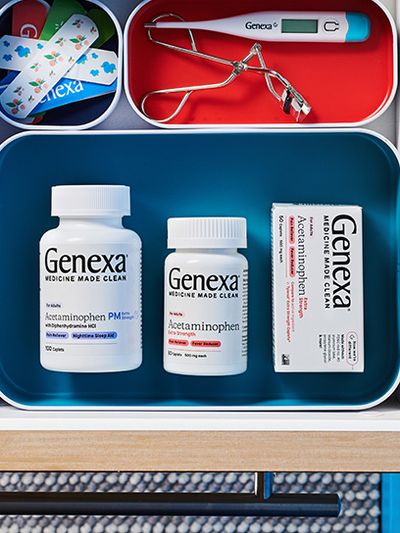How Long Does Motion Sickness Last?
Understanding Motion Sickness
Table of contents:
While adults can suffer from it, too, motion sickness is more common among children. This condition occurs whenever there are repeated movements during movement that aren’t typical. As a result of these unusual movements, the brain gets confused, and balancing issues ensue.
Movements like going in circles or in up and down motions are commonly associated with motion sickness. What often happens when kids get motion sickness in a car is that they are focusing on something inside the vehicle rather than looking out a window to let their brain process and understand why they are experiencing certain moving sensations.
This causes confusion between what their body’s balancing mechanisms are saying and what their eyes are seeing. These confusing signals are what lead to motion sickness. If your child tends to get sick a lot when you drive, just know that kids usually grow out of getting motion sickness. And until then, there are luckily clean options to help soothe upset tummies that I’m passionate about because I’ve partnered with the company that is making these clean medicine alternatives. Genexa makes medicines with the same active ingredients you need, but without the inactive ones you don’t
Motion Sickness: A Closer Look
There are certain catalysts that bring on motion sickness. Some kids (and adults) suffer from motion sickness as a result of certain foods, smells, or anxiety. What typically happens, though, are people focus on something in their vehicles while in motion.
For example, you might look down at your phone (a big no-no for several reasons) or check a map for directions. As you can imagine, as dangerous as this is for drivers to do, it’s usually fleeting. As such, there is less of a chance to get motion sickness (but it’s worth noting that your eyes need only to be off of the road for a split second for an accident to happen, so do what you can to be mindful and stay safe!).
Kids, on the other hand, don’t need to keep their eyes on the road. As such, they can and do frequently play video games or mess around on a smartphone or tablet in this modern day and age. Depending on the length of the trip, kids might be transfixed to a screen for hours at a time.
Factor in the movement and mixed signals going on in their brains, and you’ve got a recipe for motion sickness. You don’t have to be in a car, either, to get motion sickness. Symptoms can occur while on a boat, aircraft, or train.
Amusement parks are another common culprit behind motion sickness, but it’s not just roller coasters that make some people sick. A simple ride on a merry-go-round has been known to cause motion sickness.
Common Symptoms
The symptoms of motion sickness aren’t unlike the flu or a stomach virus. You’ll know it when motion sickness strikes, as it typically comes on quickly.
While some kids might suffer only mild symptoms, others are quite severe.
These common symptoms include:
- Increased saliva production
- General feeling of nausea
- Feeling cold
- Weakness
- Headache
- Sweating
- Pale skin
How Long Does Motion Sickness Last?
Many children feel better as soon as the vehicle they are riding in stops, and they’re able to get out and walk around. However, this isn’t always a guarantee. In some children, motion sickness symptoms can last for several hours after onset.
Even if they’ve been motionless for a while, the symptoms can persist throughout the day. And in extreme cases, kids might even suffer from motion sickness for days after driving has stopped. If this happens, you shouldn’t necessarily be alarmed.
It’s normal for motion sickness to linger at times. However, if you feel like the symptoms are hanging around well after they typically subside, it never hurts to get a second opinion. Contact your child’s pediatrician to schedule an appointment, as they can better determine if there is something else going on that needs to be addressed.
Because symptoms of motion sickness are always a possibility, it’s best to prepare your family before getting in the car.
Preparing for Motion Sickness
Thankfully, there are some things you can do to help reduce or even prevent motion sickness from setting in. If you’re going to be traveling, plan ahead by making sure that your child doesn’t eat a heavy meal shortly before leaving.
It’s best to stick with light foods that are high in carbs, such as cereals. Have your child eat an hour or two before you leave for the best results. If you’re going to be going on a long trip and will be in the car for several hours, stop for breaks so your child can get some fresh air.
Drinking cold water during your travels is a good way to curb symptoms, too. And although it will prolong your journey, taking the time to walk around every so often will go a long way in keeping motion sickness at bay.
It might also help to open a car window, as this will allow fresh air to enter the vehicle. But be warned, if opening a window causes fumes of fuel to get inside the car (like if you’re stuck in traffic), it could exacerbate your child’s symptoms. Instead, try cranking up the air conditioner to see if that helps.
Have your child close their eyes to help eliminate any confusing signals in their brain. They might also have to stop any screen time throughout most of the trip if this is what’s causing their motion sickness. Naps can be helpful here!
The distraction of audio signals can help reduce confusing signals, so some people find relief by listening to music or podcasts while in motion. While it’s certainly convenient to let your kids watch movies to pass the time on long car rides, doing so can actually cause motion sickness.
As such, you might need to get creative in how you entertain your child during trips in the car -- old school road trip games, any one?
Treating Motion Sickness
If your child comes down with motion sickness, there are some things they can do that might help minimize symptoms. Taking slow, deep breaths is a long-standing method that helps many people cope with motion sickness. By focusing on their breathing, your child may find that it’s easier to manage their sickness.
Medication can prove effective, too, although you’ll want to use caution in what you give your child. As such, more parents are turning to clean medicine alternatives for their children’s healthcare needs, so they get the same active ingredients they need, but avoid the extra unnecessary inactive ingredients.
This is the reason Genexa was founded. As the first clean medicine company, Genexa is dedicated to providing families with clean medicine alternatives to OTC medicine filled with artificial fillers. One of their best choices for motion sickness in children is Kids’ Tummy Relief.
This medicine made clean contains calcium carbonate, an antacid that provides relief from a litany of tummy discomforts, such as indigestion, upset stomach, and heartburn, but without any artificial inactive ingredients commonly found in OTC products.
Thanks to Genexa’s stance on ditching the artificial additives used by other brands, you can trust that you’re giving your child medicine with active ingredients that are proven safe and effective (when used as directed) for their motion sickness, but without the inactive ingredients you don’t need.
If you travel often or your little one is prone to motion sickness, simply pack a bottle of Kids’ Tummy Relief along with you. This medicine comes in convenient chewable tablets, so there’s no mess, and it’s easy to have them taken on the road.
Summary
Motion sickness affects a lot of children, so preparing for it by taking some precautionary steps and as well as stocking up on Genexa’s kid-friendly tummy-soothing formula can come in handy!
Genexa offers a wide range of medications for both kids and adults, so you can keep your family healthy with clean medicine that uses real ingredients no matter what symptoms you’re seeking to soothe.
Have a safe trip!






